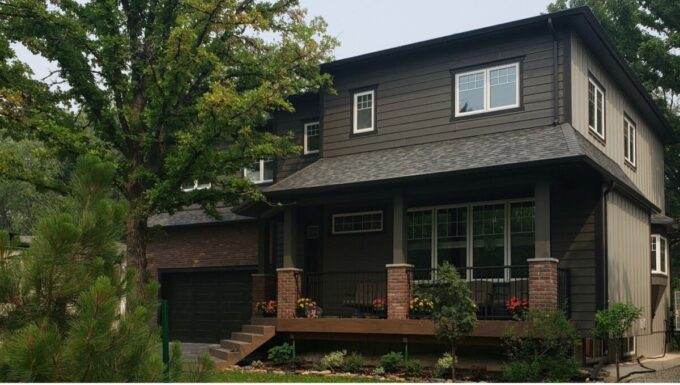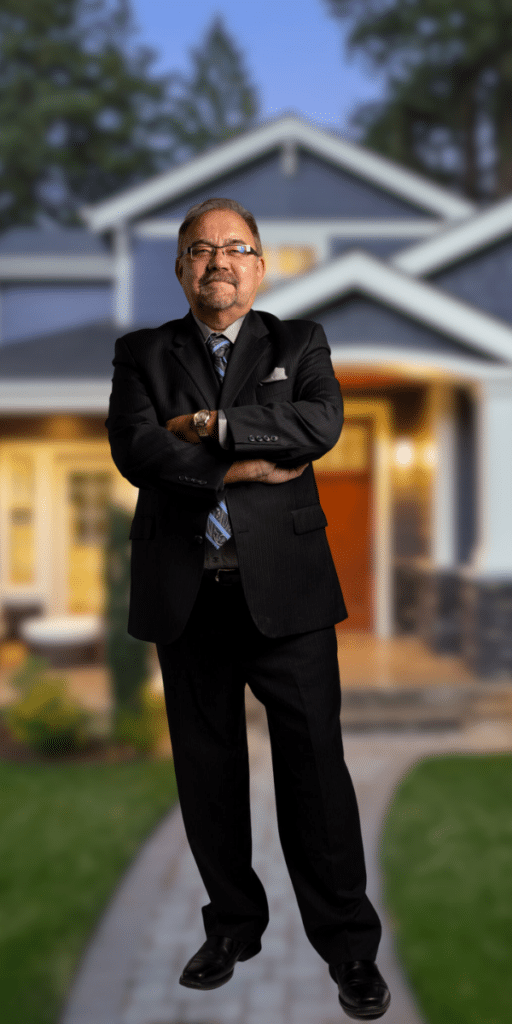Living in a home is a lifetime commitment to maintenance and upgrades. It seems there is always something that needs doing, and it can take a lot of energy to keep up with it. Often the last thing on your mind is what eco friendly and sustainable products can I use to minimize my carbon footprint while doing my next reno.
That is not to say climate change, environmental impact and social responsibility isn't front of mind for today's generation. According to an article by Harvard 84% of people from 16 to 25 are at least moderately worried about global warming. 59% of people in that age group are very or extremely worried about it. The challenge is that the list of green products is long, and can sometimes be confusing.

But have no fear fellow conscious consumer! You can consider future generations while renovating, all you must do is read this blog post. We are going to spend some time going through ways to live a more sustainable living without breaking the bank, or needing a Harvard degree 😉
Why Consider Sustainability and Eco-Friendly Products?
The answer to this question will be as wide ranging as the readers of this blog. Sustainability is tremendously personal. Some will choose to pursue a sustainable lifestyle to lower their carbon footprint, energy consumption, their food waste, or other economic benefits. They want to conserve natural resources, reduce plastic waste and greenhouse gas emissions and support eco-friendly companies.
Others wish to reduce their reliance on an unstable supply chain, fight rising energy costs, increase use of renewable energy, and avoid expensive repeat maintenance procedures.
The multifaceted approach to eco-friendly practices means there are no one-stop shop solutions, but generally sustainable initiatives will save you money, will help you breathe less chemicals, and will ensure you have a healthy planet to pass on to you children and the children after them. Sustainable means living in such a way that keeps you within your means, within the planet's capacity for population growth, and in a way that keeps you healthier longer.
What Constitutes Sustainable Products?
Sustainable materials and products are not always immediately obvious, especially with dubious advertising practices. There also is not one product for every application. You may be considering re-doing your siding. If that is the case, it would be wise to consider reducing your reliance on fossil fuels by ensuring you have better insulation around the home, and that you can eliminate thermal bridging.
Perhaps you are just considering a new paint job, and you can help reduce the toxic chemicals in your home by using zero VOC paints

The journey to zero begins with an understanding of where you are and where you want to be. In general, the more natural ingredients in a product the greener it will be considered. For example, you can get fiberglass insulation, or you could consider using blown in dense pack cellulose for your walls. Cellulose is made of mostly recycled paper products (renewable resources) mixed with a natural glue product called borax (if you're interested in different insulation types read on!).
Beyond sticking to the most natural materials available (using water as a cleaner as much as possible, vinegar instead of harsh chemicals when flooring allows, and other similar situations where you can find a more nature-based alternative to the more commonly available chemical products) you can also rely on external sources. The Living Building Challenge has a helpful, if not complicated and wordy list of red listed products to stay away from!
Solutions by Level of Intensity
So if you have been paying attention here you realize that there is a wide range of available options to help you make a greener tomorrow. Ranked below by level of intensity are a few suggestions on how to kick start a greener lifestyle.
Minimal Investment
One of the easiest and most readily available ways to live more sustainably is to look around what you use every day. Determine whether there is waste built into your habits. Do you find yourself often throwing out half a container of sour cream? Food waste is a huge carbon footprint problem, because when it hits the landfill and rots it releases methane, which is 25 times more potent than carbon dioxide. To some calculations food waste would be the world's third worst emitter of greenhouse gasses.
Another similar item is to make sure your current systems and equipment are running at peak efficiency. Have you vacuumed under the fridge? Do you habitually change your furnace filters every 3 months? Did you know you can turn your water heater down in winter to save a few bucks as well? There are lots of good lists available out there to offer other tips for winterizing and “summerizing” your home. These items are usually low investment required, but offer dividends in saving excessive wear and tear, and helping your equipment perform at peak efficiency.
Water reduction is another area of concern. If you can run the washing machine on a shorter cycle with less water usage that is a major help. By 2025 WWF estimates that up to two thirds of the world's population may be facing water shortages. If you are able to reuse rainwater to water your garden and lawn or can plant more native plants that do well in your local area you will reduce your consumption on a scarce and highly valuable resource.
Shopping with reusable bags made of natural fibers and reducing the use of plastic bottles and plastic bags is a great way to get started and a step in the right direction. All these small changes, which are very low cost, but can a great impact towards environmental sustainability.
Alright, We Will Spend A Few Bucks
If you are wanting to roll the sleeves up a bit and are willing to invest a little money, you may consider purchasing more energy efficient equipment. Depending on your budget, Mitsubishi manufacturers a high-quality air-source heat pump. This unit runs on electricity (in Manitoba where I'm writing from, we have very green and low-cost hydro electricity, gas heat has roughly 65 times the carbon footprint per unit of heat!!), so it will shrink your carbon footprint. The cool thing about it is that, like a geothermal unit, it can run more efficiently than electric resistance heat, and this too will save you money on your bills.

Other equipment upgrades would range from appliances, like your washer and dryer to things as cheap as the Swiss eco tap. This gem of a faucet reduces your energy usage and freshwater usage at the same time. It reduces your water usage by 80% and reduces your energy usage by 100% because of the technology involved. Instead of a stream of water it emits a high-pressure mist that warms to room temperature instantly and sufficiently moistens your hands to be able to wash them.
Another piece of equipment that is recommended for a healthier indoor air quality is an HRV or ERV. I won't go too overboard in explaining the difference and how they function, but essentially, they act as the lungs of your home, bringing in fresh air and expelling the stale air. Instead of bringing in the air at the temperature difference from indoor to outdoor, it uses the indoor air to temper the outside air, requiring less energy to condition it to your tastes. For more on this, please see this article.
Other small cost investments specific to Manitoba would involve using Efficiency Manitoba for their grants, or applying for the federal Greener Homes Grant if you are in Canada. They will do an energy audit for you and recommend the most effective upgrades and even pay you for doing it (up to 5,000 for greener homes grant, and a fixed amount depending on your insulation upgrade through Efficiency Manitoba).
3) Alright, To Heck With It, I’ll Take Out a Loan
If you have some equity in your home, and you are looking for a wise way to spend some in such a way that it pays you back, then eco-friendly upgrades are a valuable consideration. Depending on the amount involved you could be looking at something like insulating a basement, finishing a new basement out and replacing the mold and rot prone fiberglass and vapour barrier over concrete wall, or even building a new sustainable home!
Starting on the renovation side, the most practical updates are insulation. The goal of an insulation retrofit should be to eliminate thermal bridging. Do this by creating a blanket of rigid insulation either on the inside or the outside, depending on what you are renovating. This thermal bridging can easily cut in half the effectiveness of your insulation as mentioned in the link at the top of the article.
Next would be attic insulation. If you are re-doing your shingles, it is a good time to consider your roof and attic insulation. Roof insulation and ventilation concerns can not only cost you money on heating and cooling but can lead to Ice Damming. This is a problem we face in Manitoba where the roof isn't properly insulated or ventilated. The ensuing melting and freezing of winter precipitation can create literal ponds on the roof that work their way back up under the shingles.
To properly address this, make sure you have a sufficient vapour barrier (consider removing your insulation and spray foaming 3” on your ceiling), sufficient insulation (blow-in cellulose is our go-to), and sufficient attic insulation at the eaves and the peak. This means unobstructed space for cold outside air to cool the roof deck all winter long and prevent melting of snow.

A quick shout out goes to solar panels. They are a tricky animal; their economic payback varies so greatly between the provinces. The advantage to them is that they are de-centralizing the utility grid and allowing you some safety net in case hydro goes out in your area. However, with cheap Manitoba rates, and minimal rebates it can be tricky to make an economical argument for them here.
4) Pfft, Let’s Sell The Home and Build It Better!
Here's the nuclear option. And it gets complicated because the greenest home is the one that is standing. However, there is large demand for housing stock, and most homes aren't being built to the level they could be. In Manitoba alone SEEFAR estimates that building all new homes to Passive House standards would create an additional 20 billion dollars of wealth in Manitoban pockets over the next 50 years.
Building from scratch allows you to do a lot more customization of how your green lifestyle can be implemented. Not only will you save money on ongoing costs of ownership, but you will have used healthier products. This will leave you with healthier indoor air quality, increase energy efficiency, reduce water use and environmental damage.
You can insulate properly at every detail and use low to no-VOC products. You can position your home and windows to capitalize on solar heat gain and use passive heating to warm your home in winter. And you can custom design overhangs to shade the windows in the hot summer sun to ensure you don't over-heat your home.
If you consider building a new home and want to build it in the most energy efficient manner possible, it is important to make sure you find a suitable builder with experience in this industry. There are a lot of moving parts in a home, and a truly sustainable approach requires the home be treated as a system.
If your builder is not confident they can deliver on a green home, or an eco-friendly build, and they want to rely on you to supply the details, the chances are something will be missed. Efficiency Manitoba offers a good selection of builders do vet out if you are interested.
And if this is the route you choose to go, it will help to have someone who knows homes to both sell your home and find you that dream lot. Perhaps it is an infill tear-down, or a new lot just outside the city. Either way the importance of having an experienced and personable guide beside you along the way is hard to understate.
Hopefully the article has served to encourage you to pursue your dreams of sustainability. It does not matter where you are currently at, or what your budget is, there are eco friendly and sustainable upgrades for your home and your lifestyle that can help you live a more healthy and socially conscious life.
FAQ about Eco Friendly and Sustainable
Q: What Eco Friendly Means
A: Eco friendly quite literally means ‘friendly to the natural environment and eco-system'. It refers to sustainable practices which reduce the use of raw materials, reduce carbon emissions. practices that help conserve resources like water, natural gas and. Eco-friendly products and practices prevent contributions to air, water and land pollution.
Q: Are eco friendly products more expensive?
A: Unfortunately at this time the short answer appears to be YES. Dutch consulting firm Kearny completed a study which shows that eco friendly and sustainable products are approx. 80% more expensive. Anyone shopping for groceries already knows that ‘organic' foods are substantially more expensive than their non-organic counterparts. Hopefully, as these sustainable companies, products and foods become more common and acceptable, their price will come down.
This article was written by Josh Friesen of Dueck Builders, builders of fine sustainable homes
 About the Publisher
About the Publisher
Bo Kauffmann is a residential real estate agent with over 18 yrs experience in helping buyers and sellers achieve their goals. Inducted into the REMAX Hall of Fame in 2010 and receiving the REMAX Lifetime Achievement Award in 2019, Bo has sold over 500 houses and condos in the Greater Winnipeg market. He is an accredited buyer representative (A.B.R.) and a Luxury Home Marketing Specialist.
Bo provides exceptional service to First-Time Home-Buyers, Seniors looking to downsize and Home Sellers of all ages.
He can be reached easily By E-Mail or call/text him Call/Text Here
Never miss an episode of our real estate podcast. Install our FREE Podcast App available on iOS and Android. For your Apple Devices, click here to install our iOS App. For your Android Devices, click here to install our Android App. Check my videos on Youtube






Dash Service
I completely agree with the point made in this article about the importance of energy-efficient appliances. But I also need to add that even if you have high-efficient appliances like Energy Star air conditioners, you need to remember about regular air conditioner maintenance. Otherwise, it won’t bring good results.
Happy Hiller
Thanks for the helpful advice!
I just want to add a few words about home insulation. If you get your hot water from a hot water storage tank, you also need to insulate it for winter.
Insulation with an R-value of at least 24 is preferable. This could reduce heat loss by up to 45% and save you around 10% in water heating costs.
Above&Beyond
Yes, it’s important to change HVAC filters on a regular basis. It’s perhaps the simplest and quickest way to improve indoor air quality and improve system’s efficiency. The good news is that changing a filter is pretty easy and takes only 5-10 minutes. However, if you have never done this for the first time, you can hire an HVAC contractor to show you how to do it correctly.
Polestar
You can also make your home more eco-friendly by using energy-efficient air conditioning systems. Such things as SEER rating and ENERGY STAR labeling show the system’s efficiency. Please remember to check recent changes of efficiency standards for HVAC systems. These changes are legally effective from January 1, 2023.
Gervais Mechanical
Thanks for the reminder! The other HVAC efficiency ratings, EER and HSPF, have also been updated to new versions: EER2 and HSPF2. The goal for all of these ratings is to best replicate how an HVAC unit would perform in real-world conditions.
Integrity
Thanks for sharing! Since the usage of energy on heating and cooling the house account for most of the energy use, it is important to remember about regular maintenance of HVAC systems. Regular HVAC maintenance can reduce your home’s energy consumption by 25-30%, helping you avoid higher-than-usual electric bills.